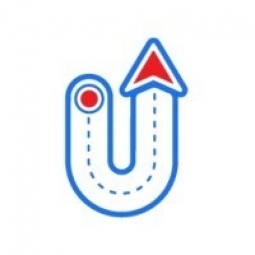下载PDF
Sunbility’s Successful Journey of Covering More Clients With Upper
适用行业
- 消费品
- 可再生能源
用例
- 时间敏感网络
- 车载远程信息处理
服务
- 系统集成
挑战
Sunbility 是一家位于佛罗里达州的太阳能安装公司,该公司正在努力应对阻碍其业务发展的多项运营挑战。 COVID-19 大流行对其劳动力产生了负面影响,需要进行重组以应对员工短缺并维持服务水平。该公司还面临着无人值守客户呼叫增加的问题,这导致了潜在的收入损失并损害了客户忠诚度。他们的服务路线规划是使用谷歌地图完成的,既耗时又容易出错。车主 Jason 发现很难跟踪服务团队中的司机,导致服务任务的调度和调度效率低下。这些挑战促使杰森寻求一种可以简化日常运营的解决方案。
关于客户
Sunbility 是一家总部位于美国佛罗里达州的太阳能公司。该公司在20多个县提供住宅太阳能安装服务。 Sunbility 致力于减少碳足迹,为客户提供节能解决方案。然而,该公司面临着多项运营挑战,包括因 COVID-19 大流行导致的人员短缺、无人值守的客户呼叫增加以及路线规划和任务调度效率低下。这些挑战影响了他们的业务和客户忠诚度,促使他们寻求简化运营的解决方案。
解决方案
Sunbility 采用 Upper 来解决其运营挑战。 Upper 的“excel 导入”功能使该公司能够简化和优化其服务路线。 Sunbility 的老板 Jason Dudney 发现,他可以输入地址列表,为他的服务团队找到最佳路线,从而提高调度和调度效率。 Sunbility 还使用 Upper 确定紧急服务订单的优先级,确保按时处理这些订单,从而提高客户忠诚度并提高整体效率。 Upper 提供的即时客户支持还帮助该公司及时获得任何疑问或挑战的帮助,从而实现无缝的用户体验。
运营影响
数量效益
相关案例.

Case Study
Remote Monitoring & Predictive Maintenance App for a Solar Energy System
The maintenance & tracking of various modules was an overhead for the customer due to the huge labor costs involved. Being an advanced solar solutions provider, they wanted to ensure early detection of issues and provide the best-in-class customer experience. Hence they wanted to automate the whole process.
.png)
Case Study
Improving Vending Machine Profitability with the Internet of Things (IoT)
The vending industry is undergoing a sea change, taking advantage of new technologies to go beyond just delivering snacks to creating a new retail location. Intelligent vending machines can be found in many public locations as well as company facilities, selling different types of goods and services, including even computer accessories, gold bars, tickets, and office supplies. With increasing sophistication, they may also provide time- and location-based data pertaining to sales, inventory, and customer preferences. But at the end of the day, vending machine operators know greater profitability is driven by higher sales and lower operating costs.

Case Study
Vestas: Turning Climate into Capital with Big Data
Making wind a reliable source of energy depends greatly on the placement of the wind turbines used to produce electricity. Turbulence is a significant factor as it strains turbine components, making them more likely to fail. Vestas wanted to pinpoint the optimal location for wind turbines to maximize power generation and reduce energy costs.

Case Study
Siemens Wind Power
Wind provides clean, renewable energy. The core concept is simple: wind turbines spin blades to generate power. However, today's systems are anything but simple. Modern wind turbines have blades that sweep a 120 meter circle, cost more than 1 million dollars and generate multiple megawatts of power. Each turbine may include up to 1,000 sensors and actuators – integrating strain gages, bearing monitors and power conditioning technology. The turbine can control blade speed and power generation by altering the blade pitch and power extraction. Controlling the turbine is a sophisticated job requiring many cooperating processors closing high-speed loops and implementing intelligent monitoring and optimization algorithms. But the real challenge is integrating these turbines so that they work together. A wind farm may include hundreds of turbines. They are often installed in difficult-to-access locations at sea. The farm must implement a fundamentally and truly distributed control system. Like all power systems, the goal of the farm is to match generation to load. A farm with hundreds of turbines must optimize that load by balancing the loading and generation across a wide geography. Wind, of course, is dynamic. Almost every picture of a wind farm shows a calm sea and a setting sun. But things get challenging when a storm goes through the wind farm. In a storm, the control system must decide how to take energy out of gusts to generate constant power. It must intelligently balance load across many turbines. And a critical consideration is the loading and potential damage to a half-billion-dollar installed asset. This is no environment for a slow or undependable control system. Reliability and performance are crucial.

Case Study
Remote Monitoring and Control for a Windmill Generator
As concerns over global warming continue to grow, green technologies are becoming increasingly popular. Wind turbine companies provide an excellent alternative to burning fossil fuels by harnessing kinetic energy from the wind and converting it into electricity. A typical wind farm may include over 80 wind turbines so efficient and reliable networks to manage and control these installations are imperative. Each wind turbine includes a generator and a variety of serial components such as a water cooler, high voltage transformer, ultrasonic wind sensors, yaw gear, blade bearing, pitch cylinder, and hub controller. All of these components are controlled by a PLC and communicate with the ground host. Due to the total integration of these devices into an Ethernet network, one of our customers in the wind turbine industry needed a serial-to-Ethernet solution that can operate reliably for years without interruption.






